Links to external sources may no longer work as intended. The content may not represent the latest thinking in this area or the Society’s current position on the topic.
The future of photonics: sensors and quantum technologies

Read the conference report (PDF).
This one-day international conference held by the Royal Society in Cardiff will bring together experts to explore recent developments in photonic technologies and the future opportunities and challenges that they present.
Photonic technologies have a wide range of recent and future applications including sensors, optical computers, next-generation lasers and LEDs, visible light communication (LiFi), water purification, quantum information processing and more.
Speakers will discuss the use of photonics from smart cities to satellites and explore the vast opportunities of photonic technologies for society and the economy. They will introduce current state-of-the-art technology and blue-sky applications in the broader context of regulation, policy and funding.
Photonics ties into many topics in the Government's Industrial Strategy Challenge Fund, from early disease detection, to commercialising quantum technologies, and manufacturing and future materials. This conference will highlight the importance of photonics to solve challenges in all of these sectors.
Attending this event
This open event is free to attend and is intended for participants from a variety of backgrounds including academia, industry, government, as well as regulatory and other scientific bodies.
Contact the Industry team for more information.
About the conference series
This meeting forms part of the Royal Society's Transforming our Future series. The Transforming our Future meetings are unique, high-level events that address scientific and technical challenges of the next decade and bring together leading experts from wider scientific community, industry, government and charities.
Sign up for the scientists' newsletter to receive updates about industry programme activity and events.
Organisers
Schedule
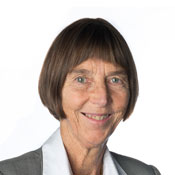
Dame Sue Ion GBE FREng FRS

Dame Sue Ion GBE FREng FRSDame Sue Ion GBE FRS FREng is Hon President of the National Skills Academy for Nuclear. She was previously Chairman of the UK Nuclear Innovation Research Advisory Board (NIRAB). She represents the UK on a number of international review and oversight committees for the nuclear sector including the Euratom Science and Technology Committee which she chaired until late 2018. She was the only non-US member of the US Department of Energy’s Nuclear Energy Advisory Committee on which she has served from 2005-2020.She currently serves as a member of the Office of Nuclear Regulation Independent Advisory Panel. Sue spent 27 years with British Nuclear Fuels Ltd (BNFL) rising to the position of Chief Technology Officer in 1992, a post she held until 2006 when she assumed a number of mainly voluntary roles in Science and Engineering, including membership of the UK Council for Science and Technology and the Engineering and Physical Sciences Research Council (EPSRC). She was Vice President of the Royal Academy of Engineering 2002-2008 and chaired its MacRobert Committee 2013-2019. Sue was Deputy Chair of the Board of the University of Manchester until September 2018 and currently serves on the Board of the University of Central Lancashire. Her core expertise is in materials science and engineering associated with the nuclear sector. Sue is a member of the Chief Scientific Advisor for Wales’s Science and Innovation Advisory Council. She has been a Visiting Professor in the Department of Materials at Imperial College since 2006, holds an Honorary Professorship at the University of Manchester and is now Chair of the Royal Society Science, Industry and Translation Committee. |
Chair
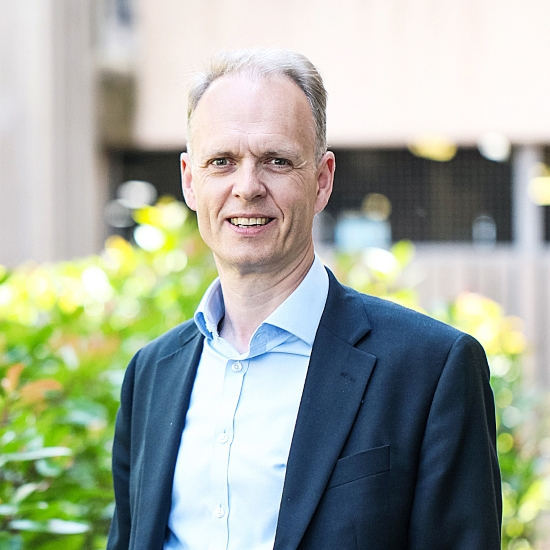
Andy Sellars, Chief Business Development Officer, Compound Semiconductor Applications Catapult, UK

Andy Sellars, Chief Business Development Officer, Compound Semiconductor Applications Catapult, UK
Andy joined the Compound Semiconductor Applications Catapult in February 2017, and was appointed Strategic Development Director in September 2018. Andy developed the Catapult's business case and strategy, submitting it to HM Treasury in 2015 following a 2-year consultation with industry, government and academia.
Andy joined the Catapult from Innovate UK, where he delivered £15m of strategic investments in electronics, smart materials and compound semiconductors. His early career was spent leading R&D teams with Rolls-Royce, Spirent PLC and Abbott Diagnostics, and he was prime consultant on film and TV lighting for James Bond and Sky News. Andy holds an Executive MBA from Glasgow University and a Doctorate from Strathclyde University.
Andy recently represented the Catapult during round table discussions with the Prime Minister, and joined the Secretary of State during the GREAT Festival of Innovation in Hong Kong.
|
The Photonics Industry in the UK goes from strength to strength, growing 8.4% in the last two years. Built upon the shoulders of the Physics community in the UK, the photonics sector maintains a relatively low profile given its £13.5 billion contribution to the UK economy and employment of over 69,000 people. In this talk, an exploration of the Photonics Industry and the main markets will be followed by an exploration of "The Valley of Death" - the gap between invention and profit. Finally, there will be a deeper investigation of the ingredients necessary for industrialisation of photonics technology, the skills needed, and a roadmap for future success. 
Dr Chris Dorman OBE, Chair of the Photonics Leadership Group, Vice President of Coherent Scotland, UK Photonics Leadership Group

Dr Chris Dorman OBE, Chair of the Photonics Leadership Group, Vice President of Coherent Scotland, UK Photonics Leadership GroupChris Dorman is Vice President and General Manager at Coherent Inc., a global leader in lasers, photonic components and tools. Based in the Glasgow facility, he joined Coherent in 2002 as a Product Line Manager and has held various Business Management positions. He has an MA in Physics from Oxford University and a PhD in Lasers and Quantum Physics from Imperial College, London. He is currently Chair of the UK Photonics Leadership Group, Chair of Photonics Scotland (formerly the Scottish Optoelectronics Organisation), serves on the Technology Advisory Group of Scottish Enterprise, is a visiting Professor to the University of Strathclyde and a Fellow of the Institute of Physics. He was awarded an OBE for services to Photonic and Laser Technology and Exports in the Queen’s Birthday Honours List, 2019. |
Chair
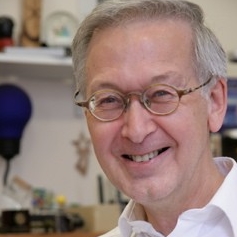
Sir Colin Humphreys CBE FREng FRS, Queen Mary University of London, UK

Sir Colin Humphreys CBE FREng FRS, Queen Mary University of London, UK
Colin is Professor of Materials Science at Queen Mary University of London, Distinguished Research Fellow at the University of Cambridge, and a Fellow of Selwyn College, Cambridge. He founded the Cambridge Centre for Gallium Nitride and set up two spin-off companies to exploit the research of his group on low-cost LEDs for lighting. The companies were acquired by Plessey, which is manufacturing LEDs based on this technology at their factory in Plymouth, UK. He founded the Cambridge/Rolls-Royce Centre for Advanced Materials for Aerospace. Materials developed in the Centre are now flying in Rolls-Royce engines. He recently set up a new company, Paragraf, to exploit the research of his group on next-generation large-area graphene, which promises to revolutionise a wide range of products including sensors, solar cells and electronic devices. Paragraf moved into premises in 2018 and is already employing 21 people.
|
Gravitational wave interferometers: Very Large Scale Quantum Sensors for Fundamental Physics
Gravitational wave interferometers, such as the LIGO Observatories, detect tiny fluctuations in the curvature of space-time itself, resulting from violent astrophysical events. These instruments operate by using km-scale laser interferometer systems to sense changes in the relative positions of suspended optics, registering displacements of 10-18 m or less. This performance relies on a range of photonic technologies that push the state of the art - from high power lasers, low absorption optical substrates, mirror coatings of ultra-low optical and mechanical loss and high efficiency photo-detectors. The gravitational wave detectors themselves are limited by quantum noise across a wide frequency range. This talk will review the state of the art and discuss the future developments in photonic technology needed to advance the field. 
Professor Sheila Rowan FRS, University of Glasgow, UK

Professor Sheila Rowan FRS, University of Glasgow, UKProfessor Sheila Rowan is the Chair of Natural Philosophy and since 2009, Director of the Institute for Gravitational Research in the University of Glasgow in the UK. She received her BSc (1991) and PhD (1995) in the field of gravitational wave instrumentation from the University of Glasgow, and subsequently held research positions split between Stanford University and Glasgow before returning full time to a Faculty position in Glasgow in 2003. She was awarded a Leverhulme Prize for Astronomy and Astrophysics in 2005, elected to Fellowship of the Royal Society of Edinburgh in 2008 and elected as a Fellow of the Royal Society of London in 2018. She received the Hoyle Medal and Prize of the Institute of Physics in 2016 in recognition of her pioneering research on aspects of the technology of gravitational wave observatories. She is currently President Elect of the UK Institute of Physics. |
|
|
Silicon core fibres for nonlinear photonics
The nascent field of silicon core fibres is attracting increased interest as a means to exploit the optoelectronic functionality of the semiconductor material directly within the fibre geometry. Compared to their planar counterparts, this new class of waveguide retains many of the advantageous properties of the fibre platforms such as flexibility, cylindrical symmetry, and long waveguide lengths. Furthermore, owing to the robust glass cladding it is also possible to employ standard fibre post-processing procedures to tailor the waveguide dimensions and reduce the optical losses over a broad wavelength range, of particular use for nonlinear applications. This talk will review progress in the development of nonlinear devices from the silicon optical fibre platform spanning the telecoms band up to the mid-infrared regime, where there is potential for application in areas such as medicine, imaging, sensing and spectroscopy. 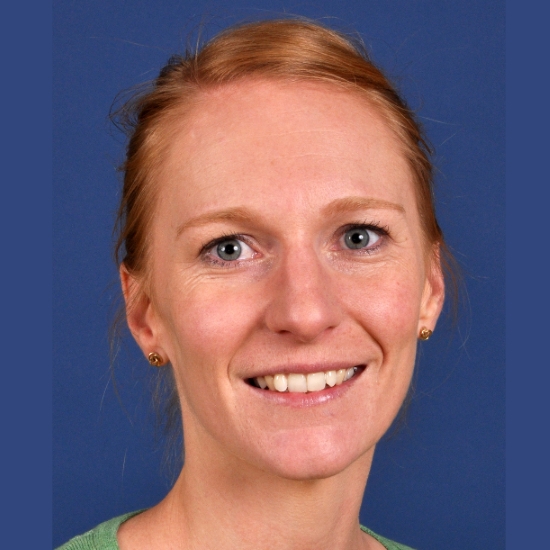
Dr Anna Peacock, Professor of Photonics, Optoelectronics Research Centre, University of Southampton, UK

Dr Anna Peacock, Professor of Photonics, Optoelectronics Research Centre, University of Southampton, UKAnna C Peacock is a Professor of Photonics within the Optoelectronics Research Centre (ORC) at the University of Southampton. She obtained her BSc and MSc in Physics from The University of Auckland (New Zealand) before moving to the ORC to undertake a PhD in Nonlinear Fibre Optics. She was subsequently awarded a Royal Academy of Engineering Research Fellowship in recognition of her pioneering work on fiberised semiconductor devices. Anna now heads the Nonlinear Semiconductor Photonics group, where the focus of her research is on the design and development of novel semiconductor waveguides. She is a fellow of The Optical Society (FOSA), the Institute of Physics (FInstP) and currently holds an EPSRC Research Fellowship to develop integrated nonlinear silicon photonic solutions. |
|
|
Materials innovations driving the photonics revolution
Photonics is at the forefront of numerous new applications spanning almost all industrial sectors from communications and the Internet of Things, to autonomous drive vehicles, aerospace, healthcare, clean energy, lighting, 3D sensing, and quantum computing, to mention just a few. At the heart of these devices are the core semiconductor materials, and specifically Compound Semiconductor materials from which the devices are manufactured. This talk will focus on the materials innovations that are driving the performance and application areas for new photonic devices, and relate these innovations to the UK's ability to compete effectively in the global marketplace for advanced photonic devices. 
Dr Drew Nelson OBE FREng, President and CEO of IQE, UK

Dr Drew Nelson OBE FREng, President and CEO of IQE, UKDr Drew Nelson OBE FREng has almost 40 years' experience in the semiconductor industry. Following a PhD in Semiconductor Physics, he led the group at BT Research Labs group responsible for the development of advanced optoelectronic devices for optical fibre communications, which today forms the core photonic devices powering the global internet. He co-founded EPI in 1988 (which became IQE in 1999) and was appointed Chief Executive Officer of IQE Plc in April 1999. IQE is now the leading global supplier of advanced semiconductor wafers, with 11 operations internationally. Dr Nelson holds several Non-Executive Directorship appointments, and served on numerous Government and Industry bodies. He received an OBE in 2001 for services to the Electronics Industry, the Silver Medal from the Royal Academy of Engineering in 2004, and has been recognised by numerous other achievement awards. He served as the UK member of the High Level Group appointed by the EC to oversee the implementation of Key Enabling Technologies (KETs) throughout Europe. Most recently he conceived and led the establishment and growth of the Compound Semiconductor Cluster in South Wales, now employing over 1500 people and gaining widespread international recognition as a global centre for Compound Semiconductor manufacturing and R&D. |
|

Dr Heba Bevan, CEO and Founder, UtterBerry, UK

Dr Heba Bevan, CEO and Founder, UtterBerry, UKHeba is the CEO and founder of UtterBerry Ltd. UtterBerry is a patented intelligent wireless sensor system which works on extremely low power. Weighing less than 15 grams, UtterBerry sensors are the smallest and lightest wireless sensors in the world and the first to employ artificial intelligence. Heba studied electronics and computer engineering. Upon graduation she worked as a CPU engineer for ARM, and was an integral designer of the ARM Cortex processors found in virtually all mobile phones today. Heba returned to Cambridge for her PhD, during which she founded UtterBerry. Five years on Heba has patents in fields from manufacturing and engineering to medicine and sensing. Heba's awards include the CIOB Digital Innovation Award (2014), the Construction Excellence National Award for Innovation (2015) and two NCE Ground Engineering awards. Heba was awarded an OBE for her contributions to technology, innovation and STEM education 2018. |
|
|
Technological convergence between solid-state lighting, electronic displays and optical communications
Solid state lighting based on gallium nitride is an energy-efficient semiconductor technology that interfaces very effectively to electronics. This is fostering advances from first-generation, so-called smart lighting towards what might be termed digital lighting, possessing sophisticated capabilities including combined illumination and optical wireless communications/LiFi functionality. In parallel, gallium nitride micro-LEDs are emerging rapidly as the basis of new forms of ultra-bright, fast response, high-resolution and scalable displays, displays that can potentially project their output and interact with their environment. The commonality of the underpinning materials and device technologies and their compatibility with electronics and solid-state photodetectors offers the exciting prospect of convergences between hitherto largely disparate lighting, display and optical wireless communications technologies. Here display and lighting systems may be to some degree interoperable and also offer various combinations of communications, sensing, tracking, ranging and imaging functions. 
Professor Martin Dawson, Institute of Photonics, University of Strathclyde, UK

Professor Martin Dawson, Institute of Photonics, University of Strathclyde, UKMartin Dawson is professor and director of research at the University of Strathclyde’s Institute of Photonics, which he helped establish almost 25 years ago. Since 2012 he has also been the inaugural Head of the Fraunhofer Centre for Applied Photonics (Fraunhofer CAP) in Glasgow. Martin has contributed broadly to laser and semiconductor research including ultrafast lasers, optically-pumped semiconductor lasers, diamond photonics and micro-LEDs, the latter of which is now emerging globally as a new form of commercial display technology. He holds fellowships of the IEEE, OSA, Institute of Physics and Royal Society of Edinburgh, and he has been awarded the Dennis Gabor Medal and Prize of the IOP and the Aron Kressel Award of the IEEE. |
Chair
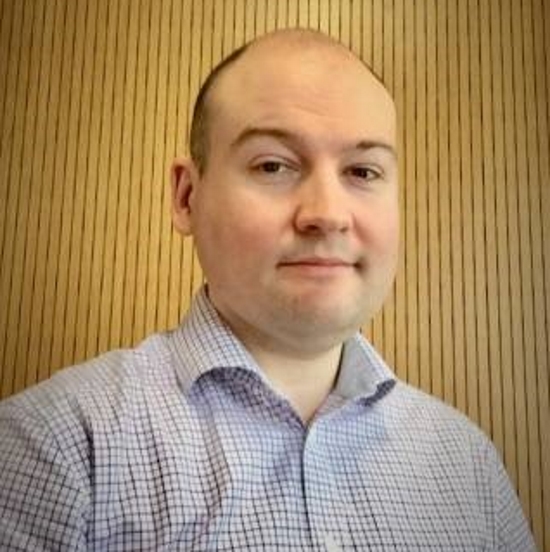
Dr Peter Mountney, CEO Odin Vision, Royal Society Entrepreneur in Residence at University College London

Dr Peter Mountney, CEO Odin Vision, Royal Society Entrepreneur in Residence at University College London
Peter Mountney PhD is a Royal Society Entrepreneur in Residence focused on quantum technology and artificial intelligence. He is a visiting researcher at University College London in the Quantum Information Group and CEO of Odin Vision. He was formally a visiting Lecturer at King’s College London and ran the quantum computing research group at Siemens Healthcare. In this role he initiated a programme of activity to explore how quantum technologies can disrupt healthcare, led the development of multiple prototype systems and created a quantum technology strategy. His research interests are in quantum information, quantum algorithm and quantum machine learning with a strong interest in near term applications of quantum computing in healthcare and artificial intelligence.
|
A global understanding of Quantum Technologies: risks and opportunities
At the moment, there exists a big hype about quantum technologies in science and in the media. There is also a need to be realistic and identify opportunities and the main technologies that can transform society. Cutting edge science and revolutionary industry are essential, but there is a requirement to make all the connections to assist the community moving forward. In this talk I will describe some of my efforts in promoting the public and business awareness of quantum technologies. My main focus is to bridge the gaps between academia and the general public as well as between academia and industry, acting as a key enabler on the advocacy side for quantum technologies, providing support to the different stakeholders in the quantum community, and creating global opportunities with quantum technologies. 
Araceli Venegas-Gomez, Founder and Director, QURECA, UK

Araceli Venegas-Gomez, Founder and Director, QURECA, UKAraceli Venegas-Gomez is the recipient of The Optical Society Milton and Rosalind Chang Pivoting Fellowship to become a ‘global ambassador’ for quantum technologies. She is a knowledgeable and fully dedicated quantum physicist (currently finishing her PhD at the University of Strathclyde), and former aerospace engineer. Araceli is contributing to the public and business awareness of physics and quantum technologies, providing a bridge between research and industry. To enable this, she has recently founded QURECA, with the aim to support business and institutions to be part of the quantum revolution. |
|
|
Photonics enabling the commercialisation of quantum technologies
Quantum technologies involve the manipulation of atoms, ions or photons and offer prospects for new types of precision sensor systems, secure communications or information processing. Many, if not most, quantum technologies rely heavily on photonics. Utilising photonics effectively in this context requires the distillation and rapid translation of often esoteric developments in research into robust and cost-effective prototypes and demonstrator systems which balance new performance and applications capabilities against market, manufacturing and supply chain issues. Innovation organisations such as Fraunhofer CAP are well placed to help address such issues, remaining close to university research whilst also helping to create challenge- and delivery-led R&D partnerships with a wide and varied range of industrial organisations. Drawing on the experience of Fraunhofer in the UK National Quantum Technology Programme, this talk will discuss lessons learned and highlight future challenges and opportunities in this area for the wider community. 
Dr Loyd McKnight, Senior Researcher, Fraunhofer Centre for Applied Photonics, UK

Dr Loyd McKnight, Senior Researcher, Fraunhofer Centre for Applied Photonics, UKAfter undergraduate studies at St Andrews and Dundee Universities, Loyd McKnight received his PhD in 2012 from the Institute of Photonics, University of Strathclyde, on the topic of waveguide devices for quantum technologies. After graduation, he joined the Fraunhofer Centre for Applied Photonics (CAP) as one of the first research staff members. Loyd now holds a senior researcher position and leads the quantum technology theme area at Fraunhofer CAP which, to date, includes more than 30 distinct projects with over 25 different industry partners. |
|
|
Quantum technologies: the opportunities and challenges ahead
Quantum Technologies came onto the UK's radar back in late 2013 when a number of pioneering academic, government and industrial figures launched the UK national quantum technology programme. The first of its kind, news of the UK's efforts to industrialise these technologies swept the world and a number of copy-cat programmes ensued. 5 years on, and the Industrial race is on to deliver high-performance, commercially viable quantum products. The potential performance power will bring significant commercial, economic and societal rewards to the winners of this race, however, it's not a simple feat to get there. Overcoming the underpinning photonics challenges, such as robustness against noise and environment is central to delivering performance, and therefore success of quantum technologies. In this talk, Richard will summarise the current status, opportunities and challenges of the emerging quantum technologies industry. 
Dr Richard Murray, Business Development Manager - Quantum Technologies, Teledyne e2v, UK

Dr Richard Murray, Business Development Manager - Quantum Technologies, Teledyne e2v, UKRichard Murray is business development manager for Teledyne e2v, part of the Teledyne group of technologies: a $2.9Bn Engineering conglomerate with a significant presence in the global emerging quantum technologies landscape. Richard helps Teledyne transition quantum from research into a new business unit, and as part of that is deputy project lead for the £8.5m Innovate UK funded project 'Gravity Pioneer'. Working across 13 companies and universities, this will demonstrate a quantum gravity sensor with the ability to detect buried tunnels, sink holes, voids and oil deposits. Before Teledyne e2v, Richard was Innovation lead for Quantum Technologies at Innovate UK, and was behind the set-up of the UK National quantum technologies programme, and, as co-author of the quantum manifesto, the European Flagship. Before that, Richard was a science and technical product consultant for TTP and has a PhD in Quantum cold atom physics from the University of Southampton. |
|
|
Secure quantum communications
The general problem of security in information and data exchange will be introduced with a focus on where quantum physics can help and where not. In particular, I will sketch the current situation in Germany, where the government will be helping researchers and engineers to reach out to the market place. 
Professor Gerd Leuchs, Max Planck Institute for the Science of Light, Germany

Professor Gerd Leuchs, Max Planck Institute for the Science of Light, GermanyGerd Leuchs is Director Emeritus at the Max Planck Institute for the Science of Light in Erlangen, and an adjunct professor within the physics department of the University of Ottawa. His scientific work includes quantum noise reduced and entangled light beams, solitons in optical fibres, and quantum communication protocols. In 2018 Gerd Leuchs won an advanced grant from the European Research Council, a mega-grant of the Ministry of Science and Education of the Russian Federation and also the Julius-von-Haast Fellowship award from the Royal Society of New Zealand. He is member of a number of advisory boards for quantum technology application and innovation in Germany and abroad. |
Chair

Professor Martin Dawson, Institute of Photonics, University of Strathclyde, UK

Professor Martin Dawson, Institute of Photonics, University of Strathclyde, UK
Martin Dawson is professor and director of research at the University of Strathclyde’s Institute of Photonics, which he helped establish almost 25 years ago. Since 2012 he has also been the inaugural Head of the Fraunhofer Centre for Applied Photonics (Fraunhofer CAP) in Glasgow. Martin has contributed broadly to laser and semiconductor research including ultrafast lasers, optically-pumped semiconductor lasers, diamond photonics and micro-LEDs, the latter of which is now emerging globally as a new form of commercial display technology. He holds fellowships of the IEEE, OSA, Institute of Physics and Royal Society of Edinburgh, and he has been awarded the Dennis Gabor Medal and Prize of the IOP and the Aron Kressel Award of the IEEE.

Dr Drew Nelson OBE FREng, President and CEO of IQE, UK

Dr Drew Nelson OBE FREng, President and CEO of IQE, UKDr Drew Nelson OBE FREng has almost 40 years' experience in the semiconductor industry. Following a PhD in Semiconductor Physics, he led the group at BT Research Labs group responsible for the development of advanced optoelectronic devices for optical fibre communications, which today forms the core photonic devices powering the global internet. He co-founded EPI in 1988 (which became IQE in 1999) and was appointed Chief Executive Officer of IQE Plc in April 1999. IQE is now the leading global supplier of advanced semiconductor wafers, with 11 operations internationally. Dr Nelson holds several Non-Executive Directorship appointments, and served on numerous Government and Industry bodies. He received an OBE in 2001 for services to the Electronics Industry, the Silver Medal from the Royal Academy of Engineering in 2004, and has been recognised by numerous other achievement awards. He served as the UK member of the High Level Group appointed by the EC to oversee the implementation of Key Enabling Technologies (KETs) throughout Europe. Most recently he conceived and led the establishment and growth of the Compound Semiconductor Cluster in South Wales, now employing over 1500 people and gaining widespread international recognition as a global centre for Compound Semiconductor manufacturing and R&D. |
|

Professor Diana Huffaker, Scientific Director of the Institute for Compound Semiconductors, Sêr Cymru Chair in Advanced Engineering and Materials, School of Physics and Astronomy, Cardiff University, UK

Professor Diana Huffaker, Scientific Director of the Institute for Compound Semiconductors, Sêr Cymru Chair in Advanced Engineering and Materials, School of Physics and Astronomy, Cardiff University, UKProfessor Diana Huffaker is the Welsh Government Sêr Cymru Chair in Advanced Engineering and Materials and Scientific Director of the Institute of Compound Semiconductors at Cardiff University. Her expertise spans nanostructures and materials, optoelectronics, sensors, quantum technology and clean energy platforms. Diana retains Adjunct Professor status at UCLA, where she directs the Integrated Nanomaterials Laboratory at the California Nanosystems Institute. Diana has co-authored over 300 publications (h-index=55), and has over 20 disclosures and provisional patents with 8 full patents. She founded two companies and is planning two more in Wales. In recognition, she has gained awards from internationally recognised societies including fellow of the Humboldt society, Learned Society of Wales, Institute for Electrical and Electronic Engineers and Optical Society of America. She is an active leader in the international technical community with Review, Editorial and Advisory responsibilities within EPSRC, Deutsche Forschungsgemeinschaft, Science Foundation Ireland and Science Advisory Council Wales. She is passionate about all-gender STEM education, especially associated with entrepreneurialism and "innovation for all". |
|

Professor Sir David Payne CBE FREng FRS, University of Southampton, UK

Professor Sir David Payne CBE FREng FRS, University of Southampton, UKProfessor Sir David Neil Payne CBE FRS FREng is Director of the Optoelectronics Research Centre at the University of Southampton, UK. His work has had a great impact on telecommunications and laser technology over the last forty years. The vast transmission capacity of today's internet results directly from the erbium-doped fibre amplifier (EDFA) invented by David and his team in the 1980s. His pioneering work in fibre fabrication in the 70s resulted in almost all of the special fibres in use today including fibre lasers. With US funding, he led the team that broke the kilowatt barrier for fibre laser output to international acclaim and now holds many other fibre laser performance records. He has published over 650 Conference and Journal papers. As an entrepreneur, David's activities have led to a cluster of 11 photonics spin out companies in and around Southampton. He founded SPI Lasers PLC, which was acquired by the Trumpf Corporation of Germany. He is an Emeritus Chairman of the Marconi Society and a foreign member of the Russian Academy of Sciences, the Indian National Science Academy and the Indian Academy of Engineering. David is a fellow of the Royal Society and the Royal Academy of Engineering. |
|

Sir Peter Knight FRS, Imperial College London, UK

Sir Peter Knight FRS, Imperial College London, UKPeter Knight is Senior Research Investigator at Imperial College. He retired in 2010 as Deputy Rector (Research) at Imperial. He was knighted in 2005 for his work in optical physics. Knight was the 2004 President of the Optical Society of America and 2011-2013 President of the Institute of Physics. He is Editor of Contemporary Physics, Chair of the UK National Quantum Technology Programme Strategy Advisory Board, chairs the Quantum Metrology Institute at the National Physical Laboratory, was until 2010 chair of the UK Defence Scientific Advisory Council and remains a UK Government science advisor. His research centres on quantum optics and quantum technology. He has won the Thomas Young Medal and the Glazebrook Medal of the Institute of Physics, the Ives Medal and the Walther Medal and Prize of the OSA, the Royal Medal of the Royal Society and the Faraday Prize of the IET. |

Sir Peter Knight FRS, Imperial College London, UK

Sir Peter Knight FRS, Imperial College London, UKPeter Knight is Senior Research Investigator at Imperial College. He retired in 2010 as Deputy Rector (Research) at Imperial. He was knighted in 2005 for his work in optical physics. Knight was the 2004 President of the Optical Society of America and 2011-2013 President of the Institute of Physics. He is Editor of Contemporary Physics, Chair of the UK National Quantum Technology Programme Strategy Advisory Board, chairs the Quantum Metrology Institute at the National Physical Laboratory, was until 2010 chair of the UK Defence Scientific Advisory Council and remains a UK Government science advisor. His research centres on quantum optics and quantum technology. He has won the Thomas Young Medal and the Glazebrook Medal of the Institute of Physics, the Ives Medal and the Walther Medal and Prize of the OSA, the Royal Medal of the Royal Society and the Faraday Prize of the IET. |
